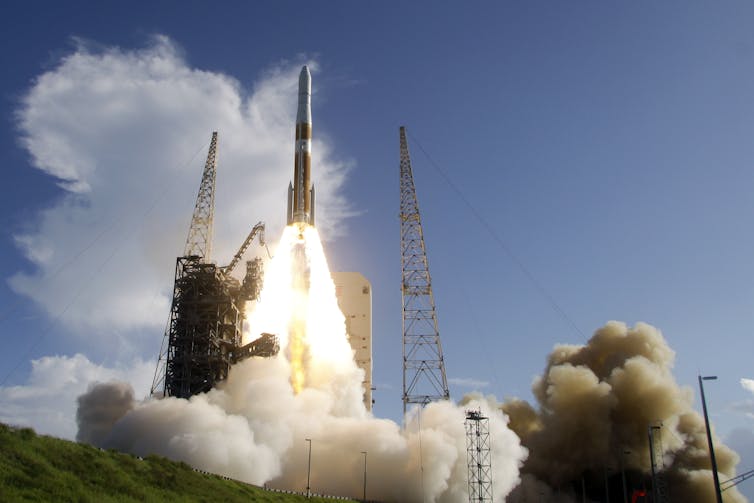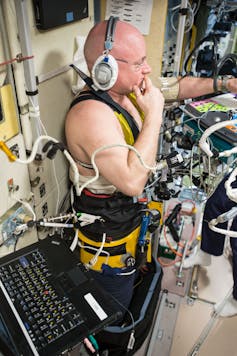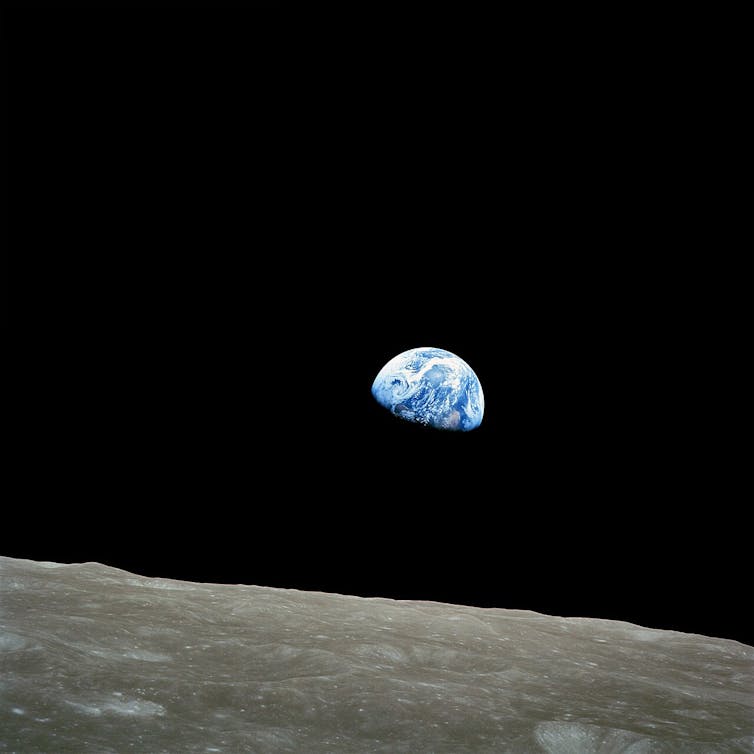
Rachael Seidler, University of Florida
When 17 people were in orbit around the Earth all at the same time on May 30, 2023, it set a record. With NASA and other federal space agencies planning more manned missions and commercial companies bringing people to space, opportunities for human space travel are rapidly expanding.
However, traveling to space poses risks to the human body. Since NASA wants to send a manned mission to Mars in the 2030s, scientists need to find solutions for these hazards sooner rather than later.
As a kinesiologist who works with astronauts, I’ve spent years studying the effects space can have on the body and brain. I’m also involved in a NASA project that aims to mitigate the health hazards that participants of a future mission to Mars might face.
Space radiation
The Earth has a protective shield called a magnetosphere, which is the area of space around a planet that is controlled by its magnetic field. This shield filters out cosmic radiation. However, astronauts traveling farther than the International Space Station will face continuous exposure to this radiation – equivalent to between 150 and 6,000 chest X-rays.
This radiation can harm the nervous and cardiovascular systems including heart and arteries, leading to cardiovascular disease. In addition, it can make the blood-brain barrier leak. This can expose the brain to chemicals and proteins that are harmful to it – compounds that are safe in the blood but toxic to the brain.
NASA is developing technology that can shield travelers on a Mars mission from radiation by building deflecting materials such as Kevlar and polyethylene into space vehicles and spacesuits. Certain diets and supplements such as enterade may also minimize the effects of radiation. Supplements like this, also used in cancer patients on Earth during radiation therapy, can alleviate gastrointestinal side effects of radiation exposure.
Gravitational changes
Astronauts have to exercise in space to minimize the muscle loss they’ll face after a long mission. Missions that go as far as Mars will have to make sure astronauts have supplements such as bisphosphonate, which is used to prevent bone breakdown in osteoporosis. These supplements should keep their muscles and bones in good condition over long periods of time spent without the effects of Earth’s gravity.
Microgravity also affects the nervous and circulatory systems. On Earth, your heart pumps blood upward, and specialized valves in your circulatory system keep bodily fluids from pooling at your feet. In the absence of gravity, fluids shift toward the head.
My work and that of others has shown that this results in an expansion of fluid-filled spaces in the middle of the brain. Having extra fluid in the skull and no gravity to “hold the brain down” causes the brain to sit higher in the skull, compressing the top of the brain against the inside of the skull.

These fluid shifts may contribute to spaceflight associated neuro-ocular syndrome, a condition experienced by many astronauts that affects the structure and function of the eyes. The back of the eye can become flattened, and the nerves that carry visual information from the eye to the brain swell and bend. Astronauts can still see, though visual function may worsen for some. Though it hasn’t been well studied yet, case studies suggest this condition may persist even a few years after returning to Earth.
Scientists may be able to shift the fluids back toward the lower body using specialized “pants” that pull fluids back down toward the lower body like a vacuum. These pants could be used to redistribute the body’s fluids in a way that is more similar to what occurs on Earth.
Mental health and isolation
While space travel can damage the body, the isolating nature of space travel can also have profound effects on the mind.
Imagine having to live and work with the same small group of people, without being able to see your family or friends for months on end. To learn to manage extreme environments and maintain communication and leadership dynamics, astronauts first undergo team training on Earth.
They spend weeks in either NASA’s Extreme Environment Mission Operations at the Aquarius Research Station, found underwater off the Florida Keys, or mapping and exploring caves with the European Space Agency’s CAVES program. These programs help astronauts build camaraderie with their teammates and learn how to manage stress and loneliness in a hostile, faraway environment.
Researchers are studying how to best monitor and support behavioral mental health under these extreme and isolating conditions.
While space travel comes with stressors and the potential for loneliness, astronauts describe experiencing an overview effect: a sense of awe and connectedness with all humankind. This often happens when viewing Earth from the International Space Station.

Learning how to support human health and physiology in space also has numerous benefits for life on Earth. For example, products that shield astronauts from space radiation and counter its harmful effects on our body can also treat cancer patients receiving radiation treatments.
Understanding how to protect our bones and muscles in microgravity could improve how doctors treat the frailty that often accompanies aging. And space exploration has led to many technological achievements advancing water purification and satellite systems.
Researchers like me who study ways to preserve astronaut health expect our work will benefit people both in space and here at home.![]()
Rachael Seidler, Professor of Applied Physiology & Kinesiology, University of Florida
This article is republished from The Conversation under a Creative Commons license. Read the original article.